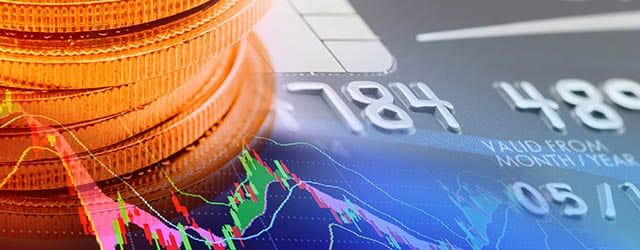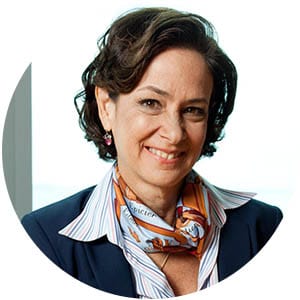Amid the surge in global trade, financial institutions are revisiting the way they conduct transaction banking.

Back To Supplement
Technological innovations like distributed ledgers may be rocketing financial institutions into the future. But Lisa Robins, a managing director and the regional head of global transaction banking, Asia-Pacific, at Deutsche Bank, says the renewed attention the industry is paying to transaction banking “is taking us back to our origins—focusing specifically on the needs of customers and organizing to meet those needs.”
Robins says banks’ renewed interest is “driven by massive growth in transactions due to the globalization of trade and colored by the need for a heightened emphasis on security in a world where competition and clients are becoming more global and more sophisticated.”
Global trade surged, over the past decade, as a percentage of global GDP, going from about 4% to 16%, Robins notes. “In the simplest terms, countries are importing and exporting more goods and services than ever before, and a lot of that growth involves emerging markets.”
In the wake of the financial crisis, revenue growth for transaction banking outperformed that of investment and commercial banking, leading to greater competition in the area of transaction banking services. As a results, banks have tried to improve their offerings. A report by Celent found that 82% of the banks it surveyed had reorganized their transaction banking operations between 2010 and 2012.

According to Celent, banks are responding to the demand for transaction banking with enhanced products and services, automated processes and increased straight-through processing. But Christian Behaghel, head of global transaction banking services at Societe Generale, says transaction banking revenues are coming under pressure, in part because of the low-interest-rate environment. “Our research suggests that total 2015 revenues actually decreased [year-over-year] by 11%,” Behaghel says. “We also think the decrease will continue, because in Europe we are facing reducing deposits due to zero or below-zero interest rates.”
The transaction banking business is under stress even in Asia, because “local banks are very liquid and business operates at very low margins, which makes it unattractive for global banks,” he says. “We are seeing a decrease in the global volume of transaction business and, worse, a decrease in margins due to the availability of excess liquidity, which is finding its way into the corporate market.”
Asia
Robins says Asia is a particular focus for transaction banking services, given the amount of trade it accounts for and the fact that in Asia so much of the trade occurs between countries within the region. That intraregional trade has attracted local banks, which have an edge over global banks, whose coverage of the region may not be as thorough, and those local banks are bolstering their transaction banking offerings.
“China is the bellwether,” Robins says. “Post-Asia-Crisis, GDP rates have grown exponentially. Growth at all costs made sense in a period when you quickly needed to create jobs and infrastructure. Now it’s lower. Given the importance of intra-Asia trade flows, China sneezes and the region catches a cold.”
As its GDP growth has slowed to around 6.7%, China has been reorienting its economy toward domestic consumption, she says. It is hoping to reduce its dependence on exports, create a consumer economy while reducing saving rates and building a social network, and develop a more robust domestic economy that’s less vulnerable to externalities.
India remains a domestic economy, Robins says, but it is making some adjustments. These include developing a strong financial technology center, although its infrastructure development is proceeding slowly.
Robins notes that the Asean region has one of the fastest-growing economies in the world. The region is also becoming increasingly attractive as both a manufacturing and a consumer base, as growth in China slows and investment there becomes more costly and problematic.
New Products And Segmentation

The focus on Asia as an investment destination is driving asset and capital inflows. Massive growth in consumer activity in the region requires new services and extensive automation. There is also outward investment within Asia and from Asia to other emerging and mature markets.
Corporates are setting up regional treasury centers to optimize cash, assist in managing transactions and develop real-time cash solutions. Banks are learning that a fresh approach to customer segmentation can boost their product margins and the contribution per customer. Transaction banking businesses traditionally segmented customers by turnover, sector and location, but by segmenting based upon the market, customers’ needs and financial sophistication, and operational capability, banks can identify different clusters and organize around them.
“Deutsche Bank reorganized corporate finance and global transaction banking last year to ensure a client-facing view of the world rather than a transaction focus,” Robins says. “And we are not alone.” “While this is clearly good for clients, it is nonetheless a journey. We need to make sure that we understand what clients want, rather than what we think they want, so we can organize around their needs, versus how it worked last century, when we were organized around products,” she adds. “The foundation is there but we are continuing to develop this. Client needs change.”
Security, Robins says, has to be a key component. “Our clients want to move, concentrate and invest funds with surety, certainty and efficiency. The medium of delivery has gone from paper via telex and fax to the Internet and now, increasingly, to other forms of digitization. Maintaining certainty is key,” she says.
When it comes to the use of new technology, “everything has to be watertight,” she adds. “We are finding new ways of thinking because whereas paper was a one-dimensional security risk, the new digital environment is three-dimensional, and there are many more opportunities to subvert transactions.”
Integrated Solutions Needed
Of course, security is only one of the challenges posed by the use of technology. “Eighty percent of what banks do is the same around the world,” says Paul Curry, global product manager for payments at Misys. “But in the new customer-centric world, having legacy multiple-point applications creates chaos and is a support nightmare. So the ability for applications to talk to each other is critical. One of our key focuses is thus to replace a mishmash of applications with an end-to-end, integrated solution.”
Misys offers both commercial and corporate banking products that provide processing for such lines of business as lending, trade, financial supply chain management, payments and cash management, Curry says. “To develop and strengthen these products we recruit expert staff from the banking sector.”
“This is achieved by having an end-to-end solution that is workflow-based and built on a layered structure with an integrated fulfillment platform offering alternative processing in line with customer, market and regulatory needs,” he says. “The verticals feed into this common platform, which insulates them from the impact of changes,” such as updates to the rule books of clearing and settlement mechanisms.
New Solutions
“New technologies such as blockchain offer massive potential,” Curry says. “But current use cases, such as smart contracts, are at a very early stage, and many banks will continue to be observers at the end of the day.” He predicts it will take five or more years before blockchain is anywhere close to general adoption.
Many observers think the legal and regulatory challenges facing new technologies will be even more significant than the technical hurdles. “Probably the single thing that will drive most change is the transition of many [clearing and settlement mechanisms] to offering real-time services,” Curry adds, noting that many stages of the workflow related to payments will need to move to a real-time basis, not just the initiation of payments.
Meanwhile, increasing regulation will affect the way that banks handle their greatest asset—data. Europe’s Payment Services Directive 2 means the emergence of payment initiation service providers and account information service providers, “opening up the possibility of employing payment aggregators and direct agency arrangements,” Curry says.



